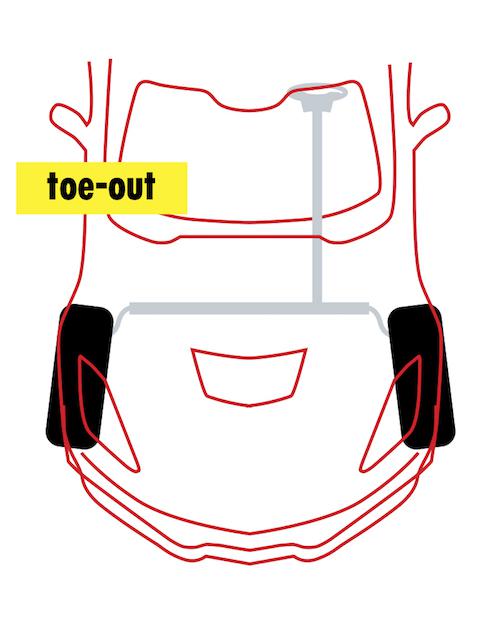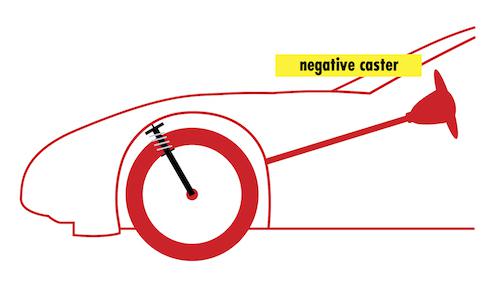How about chassis setup? The way those adjustable bits and pieces are set up and aligned can often make a huge difference in lap times, driver confidence and even tire wear.
How to Set Hot Tire Pressures
Where to start the process? How about with something that can be adjusted on any car: tire pressures.
But how do you determine what’s best–that is, fastest–for you and your car? A few possibilities: Take a wild guess, ask some randos on the internet, or–likely the proper answer–run some tests.
Andy Hollis, who does much of the tire testing found in these pages, uses a skidpad to determine hot tire pressures. Here’s how:
- Based on experience, tribal knowledge or just some gut instinct, make a good estimate for a starting point. If there’s a range, inflate tires to the high side of that figure.
- Time three hard, clockwise laps around a skidpad.
- Drop the pressures by 4 psi all around.
- Repeat steps 2 and 3 until the lap times point toward an ideal pressure range.
- Note the range of pressures that produced the fastest laps.
- Inflate all tires to the highest pressure in that range.
- Time three hard, counterclockwise laps around the skidpad.
- Drop the pressures by 2 psi all around.
- Repeat steps 7 and 8 until you home in on the fastest pressure.
- Use a probe-type pyrometer to confirm the fastest pressures. Ideally the tire temperatures will be close to even across the entire tread. If they’re a little bit cooler on the outside edge, that’s okay, too. If the temperatures in the center are too high, though, the tire is running too much air. “When in doubt, trust the clock, not the pyrometer,” Hollis adds.
- Tires cool as they sit, so waiting even a minute to measure a tire’s temperature can render the data almost useless. That’s why we recommend having at least one helper, so one person can take measurements on each side of the car. We record our data in an old-school notebook.
How to Align the Chassis
Where else can the chassis be dialed in while requiring little to no new equipment? How about the alignment? How your car’s wheels are pointed in terms of toe, camber and caster greatly impact handling.
This means, yes, possibly more testing.
First, you’ll need a venue, and here you’ll want to add in some transitions–think a small, simple autocross or a figure 8 that allows the car to reach about 60 mph.

Camber: The lean-in or lean-out of a car’s wheels when viewed from the front or rear.
Goal: On most production-based cars, maximum negative camber is the correct answer–and you may have to slot, tweak or replace something to get a little more negative camber than stock. If the outside edges of the tires are getting too hot and thus wearing too much, your alignment likely doesn’t have enough negative camber.


Toe: The relationship of the two wheels on the same axle when viewed from above.
Goal: A bit of toe-out up front can help with turn-in. Too much toe-out, though, can lead to instability, especially under braking.


Caster: The tilt of the steering pivot access from vertical when viewed from the side.
Goal: The stock caster settings are usually pretty good, but if you can, adding a bit more than stock can help with high-speed stability.
Chassis Tuning Cheat Sheet
Is one end of your car gripping better than the other? If the front wheels are sliding before the rears, then you’re experiencing understeer. The circle track crowd calls this a push.
If the rear wheels are losing traction first, then it’s called oversteer. This is known as being loose in circle track parlance. Here are some ways to fix things:

Tire Buyer Guide
What’s hot on today’s tire market? This guide should help you narrow the field, and you can dig deeper here.
- Autocross: Choose A or AA under “warmup” and B or better under “time trial pace.”
- Time trials: Choose by “time trial pace” and “wear.”
- Lapping days: Choose by “heat tolerance” and “wear.”
- Street and Track: Choose by “heat tolerance,” “wear” and “wet performance.”
















